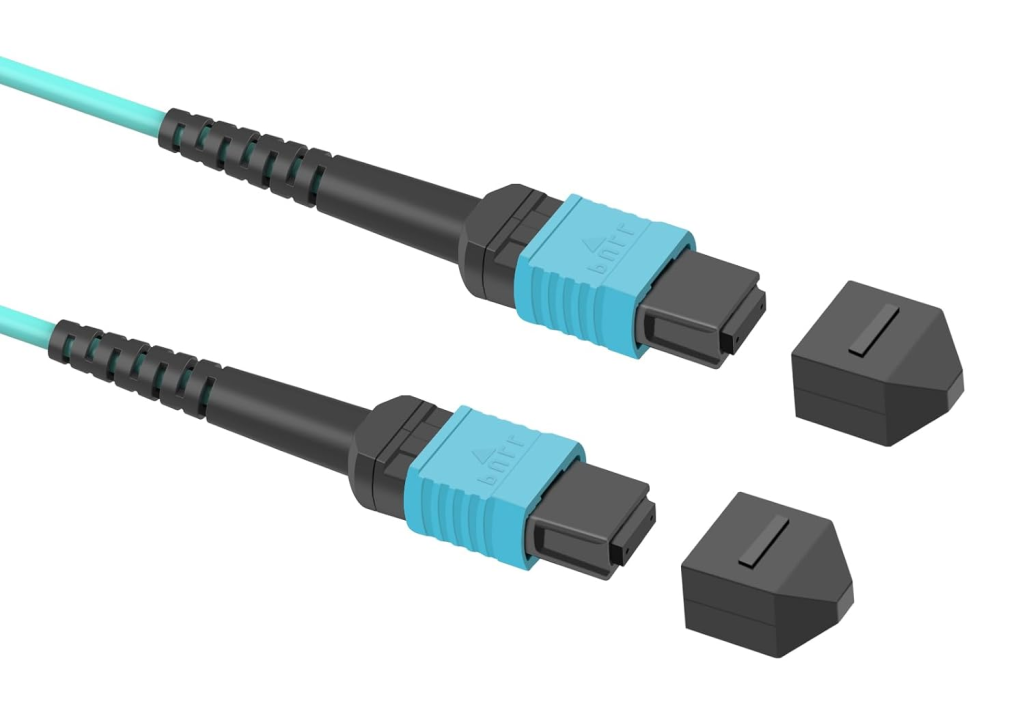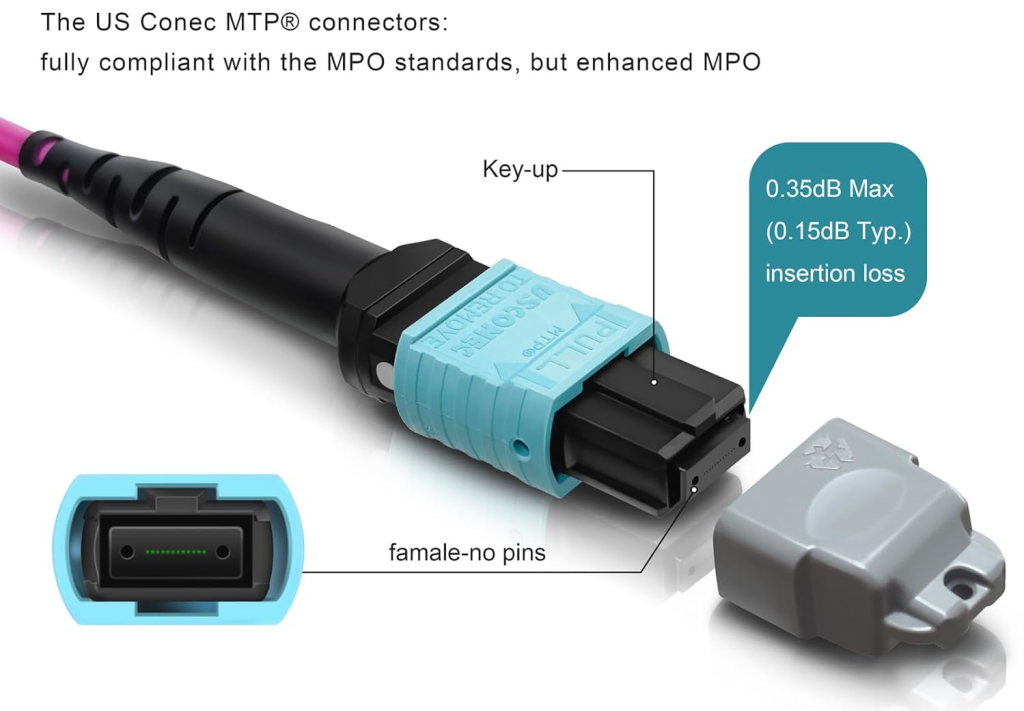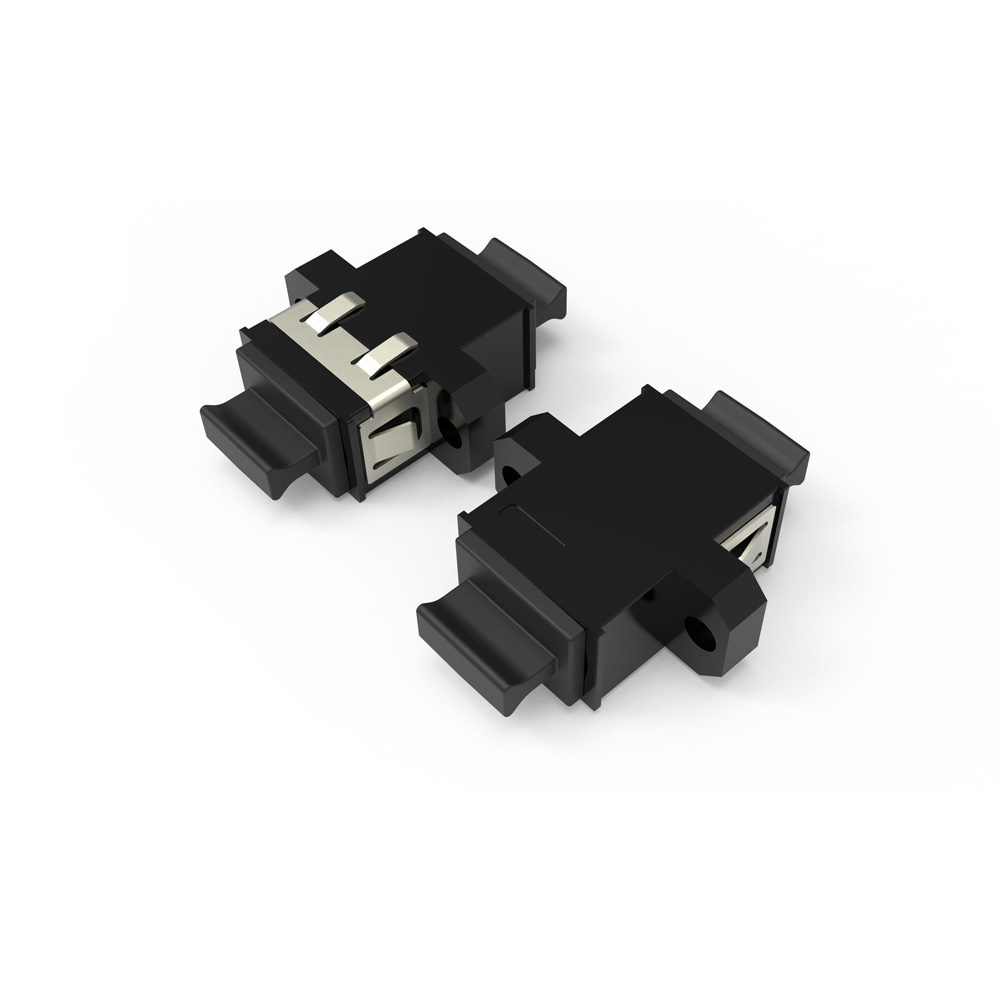40/100G and even 200/400G networks are becoming increasingly common in data centers. MPO fiber optic patch cords and MTP® fiber optic cables are frequently mentioned in data center applications, but do you understand the differences between them? Let’s take a closer look.
MPO cable, which stands for Multi-fiber Push On, is a type of multi-fiber connector. It has been around for some time and is widely used in various fiber optic applications. MPO connectors are designed to allow multiple fibers to be connected simultaneously, which is highly beneficial in scenarios where high fiber density is required, such as in data centers.

MTP cable is a high performance MPO connector, and MTP cable registered trademark by US Conec. MTP fiber patchcord offer several advantages over standard MPO cables. One of the key differences lies in the manufacturing precision. MTP connectors are produced with extremely tight tolerances. This means that the alignment of the fibers within the connector is more accurate. As a result, MTP cables typically exhibit lower insertion loss and better return loss.

Another aspect is the polishing technique. MTP fiber connectors usually employ a more advanced polishing process, which further refines the optical surface and enhances the overall optical performance. This superior polishing and alignment not only contribute to better signal integrity but also increase the durability and reliability of the connection. It reduces the chances of fiber misalignment over time, which could otherwise lead to performance degradation or even connection failures.
When it comes to compatibility, MPO fiber jumper and MTP jumper is physically similar enough that they can be interconnected in many setups. However, if you are aiming for the highest performance levels, using MTP cable with MTP-compliant equipment is recommended. In some cases, using a mix of MPO patch cord and MTP patch cord components might necessitate the use of adapters, which could introduce additional attenuation and complexity to the system.
Cost is also a differentiating factor. Due to their enhanced features and tighter manufacturing standards, MTP cables are generally more expensive than regular MPO cables. But for applications where even the slightest improvement in signal quality and connection stability matters, such as in high-speed data transmission networks for financial institutions or large-scale cloud computing data centers, the investment in MTP fiber patch cable can be well worth it.
Conclusion
While MPO fiber cable and MTP fiber cable both serve the purpose of multi-fiber connections, MTP fiber patch cord stand out with their superior performance, tighter manufacturing tolerances, advanced polishing, and better long-term reliability. Understanding these differences is crucial for making informed decisions in fiber optic network installations and upgrades, ensuring that the chosen cable type aligns with the specific requirements and performance expectations of the application.



